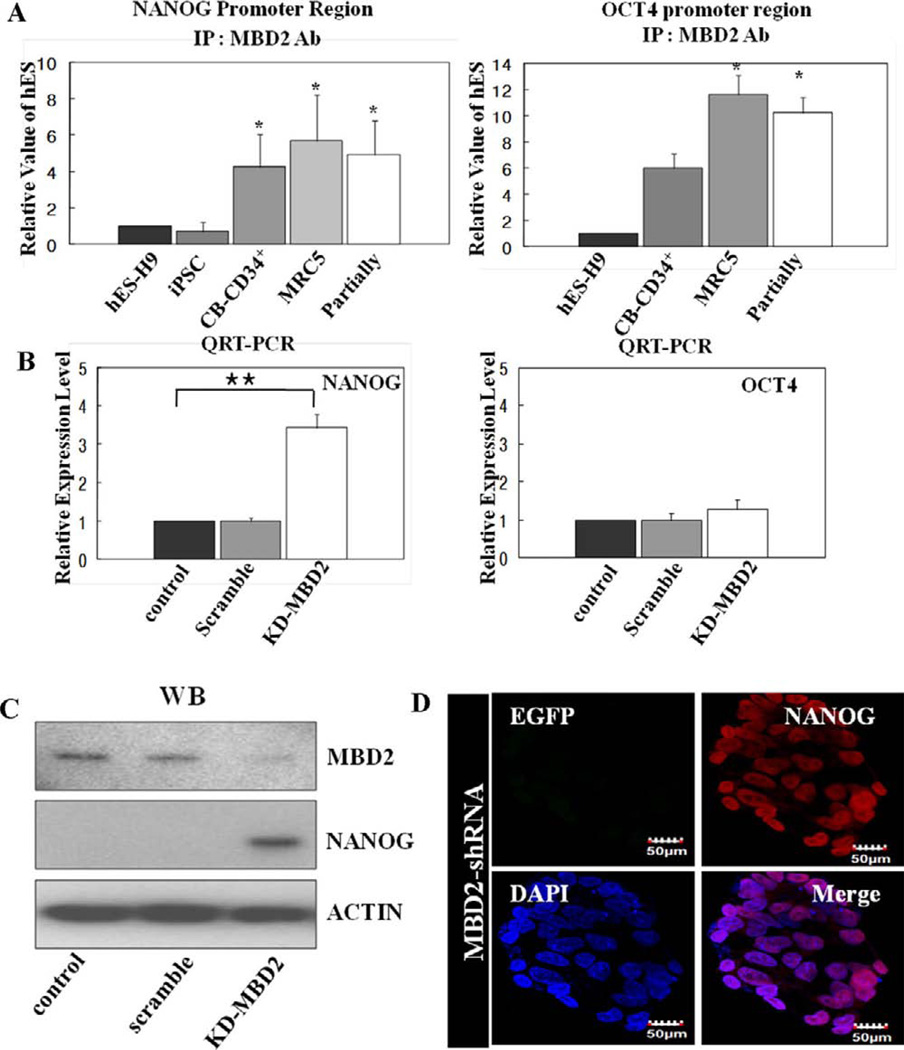Figure 5.
MBD2 regulates NANOG expression during the reprogramming process. (A): Quantitative real-time PCR analysis of immunoprecipi-tated DNA using antibodies specific for MBD2 from undifferentiated hESCs (hES-H9), partially reprogrammed cells, and CB-derived CD34+ (CD34+ cells). All relative values obtained were normalized with input DNA. (B): Control scrambled or shRNAs specific to MBD2 (KD-MBD2) were transduced to overexpress them in partially reprogrammed cells. Expression levels of NANOG and OCT4 were compared by QRT-PCR (n = 3). Fold changes of band intensities are normalized by ACTIN intensities. Statistical significance was determined by comparing the data with those of control. Student’s t test: *, p < .05; **, p < .01. (C): Control scrambled, shRNAs specific to MBD2 (KD-MBD2) were transduced to overexpress them in partially reprogrammed cells. Expression levels of MBD2 and NANOG were compared by Western blotting (left panel) and QRT-PCR (right panel) (n = 3). Fold changes of band intensities are normalized by ACTIN intensities. (D): Protein expression of EGFP and NANOG in partially reprogrammed cells transduced with MBD2-shRNA was visualized by confocal microscopic images. Overexpression of MBD2-shRNA caused increase in NANOG expression (cells with red fluorescence) and suppressed EGFP expression in these cells. Nuclei are shown by DAPI (blue) (scale bar = 50 µm). Representative micrographs are from three independent experiments characterizing partially reprogrammed cells overexpressing MBD2-shRNA. Abbreviations: CB-iPSC, cord blood-derived induced pluripotent stem cell; DAPI, 4′,6-diamidino-2-phenylindole; hESC, human embryonic stem cell; iPS, induced pluripotent stem.

